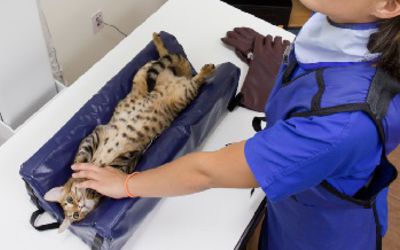
Veterinary radiography has transformed vastly over the years. Modern tools, combined with advanced techniques, ensures that our furry buddies receive the highest care possible. One pivotal progression in this domain is the use of vet x-ray positioning aids. This guide dives deep into the realm of x-ray positioning aids, providing you a comprehensive look.
Understanding Vet X-ray Positioning Aids
Before plunging into the nitty-gritty, let's first understand the basic concept. In short, x-ray positioning aids aid veterinary experts get the most accurate images while ensuring minuscule discomfort for the animal. They play a vital role in holding pets in the appropriate position, minimizing movement, and making certain uniform, high-quality results.
Why are X-ray Positioning Aids Vital in Veterinary Practice?
Safety for Both Animal and Technician: Minimising animal movement is essential during x-ray procedures. This not only ensures clear images but also cuts down the risk of radiation exposure for both the animal and the technician.
Consistent Image Quality: Uniformity is key when it comes to x-rays. Vet x-ray positioning aids aid in achieving that by guaranteeing animals are held in the appropriate posture for clear images.
Reduction in Retakes: If a pet shifts during the x-ray operation, the chances are high that the images might appear hazy. Positioning aids significantly reduce such events, leading to fewer retakes.
Popular Types of Vet X-ray Positioning Aids
Foam Positioners: These lightweight and long-lasting positioners are ideal for upholding the animal's body parts during radiography. They arrive in various shapes and sizes designed to fit different animals and body parts.
Sandbags: They're outstanding for stabilising and positioning. Their weight aids prevent movement during the x-ray process.
Tape and Straps: These can be applied to fasten limbs in place. They're tender on the skin and can be adjusted according to the pet's comfort.
Immobilisation Devices: For pets that are exceptionally restless, immobilisation devices can offer a safe way to maintain them still during the x-ray procedure without creating any discomfort.
Selecting the Right X-ray Positioning Aids for Your Veterinary Clinic
With the array of aids accessible, selecting the appropriate one might seem daunting. However, ponder on the following factors:
Type of Animals Treated: A clinic largely dealing with small pets might have different requirements than one coping with larger animals.
Frequency of Use: Resilient positioning aids are a must for busy clinics.
Budget: While it's vital not to sacrifice on quality, vet clinics also need to make sure they're making economical decisions.
Tips for Using Vet X-ray Positioning Aids Efficiently
Training is Imperative: Make sure that all your staff are adequately trained in using the aids. This will guarantee the safety and comfort of the animals while obtaining the best possible x-ray images.
Regular Maintenance: Like all machinery, vet x-ray positioning aids also degrade with time. Periodically check for wear and tear and replace them when required.
Prioritise Comfort: While obtaining the flawless image is essential, it's just as essential to guarantee the animal's comfort. Always ensure that any restraints or positioners used aren't creating any pain to the animal.
Vet x-ray positioning aids have reshaped the field of veterinary radiography. They have not only ensured the production of clear, high-quality images but have also played a vital role in boosting the safety and comfort of the pets enduring the process. As veterinary specialists, it's our responsibility to ensure we're equipped with the best tools and knowledge to provide our furry patients the best care imaginable.
If you're in the market to enhance your veterinary clinic with the latest x-ray positioning aids or require more information about them, visit xray4vets. Plunge into a domain of advanced veterinary tools and enhance the care you offer to your treasured animal patients.